Lot Reservation Management System Capstone Project Document
Introduction
Our generation is highly liberated by computer technologies. In fact, we are relying on computers and other devices most of the time to lessen our workload. Without these technologies, we can not imagine how life would seem as fast and easy as today.
There is so many stuff one can do with the help of computer technology; computers connect worlds far from each other through certain applications. Taxing research works are made simple and short with just a single click on Google and other search engines. We can use computer software in creating graphic designs, high-quality printing services, logo creation, film editing, system developing, and many others. Moreover, the use of pen and paper in order to make documentation that would take a lot of our time can also be resolved by computers. Computers are amazing that people of different ages with different occupation consider them vital to human life (L. Arenas, Jose Matthew III. 2015)
The study is focused on Lot Reservation Management System with SMS notification of the members of Company ABC. The system can generate reservations and lot locations that will enable the customers to have the reservation easily. The system will have SMS notification to verify the number of the customer if it is available. It will also help the user of the company to monitor each customer’s data and information.
The researchers will implement this system to help in monitoring and keeping transactions of each customer. It will help the customers to update their transactions by just receiving a notification from the company.
Background of the Study
The Company ABC was established in 2009 by its founder Steve Pacheco and the board of directors. Company ABC is one of the companies here in Bacolod that uses a manual system. In Company ABC for over 10 years of their services, computers are also used in accomplishing transactions like making an acknowledgement receipt, reserving blocks and lots.
Normally the lot reservation is confidential, it gives credit to the customers to have their lots easily without hard work in doing the process of their documents. The Company ABC is a mobilizer between the customers and the government. They are the ones who are in charge of everything about the papers that the government requires. They give assurance to their customers that they will comply with all the requirements and documents so that they can avail the loan from the government. Though computers are already involved, the organization needs a more organized management system to do this task.
The proponents come up with an idea to develop a Lot Reservation Management System with SMS Notification that can make their workload lighter and their task faster through the proposed system.
This will help them manage and secure several data that can be stored privately and print out the information for the benefits of their customers. The customer needs to be updated with the information regarding down payments, reservation through SMS, and with the updates that they need to know.
Statement of the Objective
Manual operation can be the reason for the inefficient and ineffective service of the company.
The proponents aim to:
- Locate a lot area through Google Map;
- Generate a report for the offices and customers; and
- To provide SMS support for the customers.
Conceptual Framework
This study intends to improve the existing manual operation of a transaction in Company ABC. The Lot Reservation Management System with SMS notification is a local system that can be accessed by the authorized person only. The system will be used for monitoring and reserving lot transaction and the system will provide a generated report for the company.
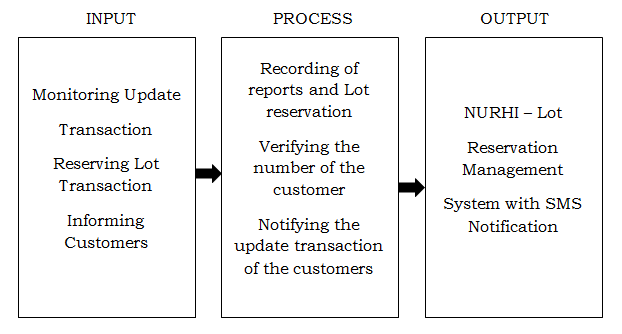
Figure 1.0 Conceptual Framework of the System
Scope and Delimitation of the Study
This section enumerates the scope covered by the study and its delimitation.
Scope
The study covers Company ABC, that focuses on allowing the office to monitor each transaction and view the information of the customers; locate lot area through Google Map; generate available lots and print out reports of the officers and acknowledgement receipt of the customer; verify the number of the customers and inform the latest update of the transactions through SMS notification; ensure the security and confidentiality of the records to be saved in a database; provide amortization and ledger; can retrieved customer’s data; add, edit, and delete transaction; and provide date range.
Delimitation
This study is limited to the office of Company ABC and members of the company, project officer, collection officer and admin; only allows payment in private transaction; only for SMS notification and Local Area Network.
Significance of the study
This study is intended for a various set of people who could benefit in the system. The result of this study will be beneficial to the following:
COMPANY ABC. This system is to provide efficient and effective transaction through an organized system; authority of monitoring and security of records. This system will be beneficial to the management in lessening of cost in terms of resources and time.
PROJECT OFFICER & COLLECTION OFFICER. This study aims to minimize their workload and it can help to monitor easily the company’s outgoing and incoming customers. This system will also save payment transaction in a database.
CUSTOMER. This system may help the customers by verifying and notifying them through SMS notification to pay for their balances and check the updates of their reservations.
PROPONENTS. This system will enable them to apply what they have studied and researched.
FUTURE RESEARCHER. This may provide a basis to the future researchers who may experience a related system.
Definition of Terms
To provide a sufficient way of communication between the proponents and the readers.
Database. This term refers to a large store of information for analysis, especially one held in a computer (Webster’s Universal Dictionary and Thesaurus).
Google Map. It is a web-based service that provides detailed information about geographical regions and sites around the world. In addition to conventional road maps, Google Maps offers aerial and satellite views of many places. (Whatls.com)
Lot Reservation Management with SMS Notification. As used in this study, a system that caters Lot reservation and SMS notification.
Manual Operation. As used in this study, this term refers to a work that is done through manpower.
COMPANY ABC. As used in this study, this term refers to a company name, it is read as a COMPANY ABC.
SMS Notification. As used in this study, this term refers to the systems’ skill to send a message to the customers as their transaction is up to date.
System. As used in this study, this term refers to a method of working or organizing all the transactions of the company.
Conceptually the term refers to a software applications used in the company like automated and computerize (Dictionary).
Transaction. Conceptually, this term refers to a business deal; an occurrence in which goods, services, or money are passed from one person, account, etc., to another (Merriam-Webster Dictionary).
Verification. As used in this study, this term refers to a code that will be sent to verify the number of a customer if it is available.
Conceptually, this term refers to an act of proving to be true; confirmation (Webster University Dictionary and Thesaurus).
Review of Related Literature
This chapter discusses the existing study in the context of preceding related research. These research study cited articles and systems, which are pragmatic are based on research and design of the developer to meet the user’s needs.
LOCAL RELATED STUDIES
Ayala Land Incorporated System
Ayala Land Inc. has an existing website for inquiry and reservation. For property inquiry, customers can inquire about different properties that include condominiums house and lot, a lot, townhome and leisure club share. The system as well allows the customer to select the range of price and location. Another way of inquiring properties is through the properties page. For reservation online, the customer can check the availability of the property by talking to a seller or property specialist (Ayala Land Inc 2011).
The Ayala Land Incorporated System has a big difference in the research that being conducted by the researchers. It has an online reservation and an existing website that caters a lot of reservation and inquiry system.
Camella Homes House Inquiry System
The Camella homes uses a system that will cater the needs of their clients the system of Camella homes had the features of house inquiry the clients will fill out the inquiry form and select the date when he/she will purchase the said house their system will generate validation code for the user to input to complete its inquiry for security purposes their system is also capable of illustrating the possible payments of their clients, whether what option the client would choose either option. Option 1: No down, no interest (2 years to pay), option 2: Bank financing, and option 3: in-house financing the respective options have their respective computation and monthly amortization (Camella homes, 2011).
The system that the researchers have imposed have some similarities to the reservation of Camella Homes House Inquiry System, the researchers will also generate validation code and computation for monthly amortization.
FOREIGN RELATED STUDIES
Parking System with centralized Reservation, Payment and Enforcement
A parking system for enabling centralized parking reservation, payment and enforcement, comprises a central computer communicating with user terminals and service terminals over a data network. The parking system maintains maps for all parking facilities administered by the respective owner and maintains information regarding the user of the respective vehicle; this information is particularly useful in security sensitive areas. A subscriber may access the system using a wireless or wireline web-enabled terminal, or with the help of an agent, to identify a convenient, un-reserved parking space, reserve that space (advance reservation is available) and pay a fee corresponding to the time-space was used. For subscriber’s convenience, payment is cashless, and is tailored to the subscriber’s needs; overtime parking protection is also available. The service terminals enable automation of most parking operations. Efficient supervision and enforcement operations of a parking facility are ensured through the use of fixed or portable license plate readers (LPR). The parking supervisor/enforcer is provided with the ability to upload into the system the current parking occupancy, download maps with the expected occupancy, and issue parking tickets to offenders (At & T Intellectual Property I, L.P. Aug 24, 2010).
The proposed system has also the same feature where it can reserve and maintains information regarding the customer. This will help them to be aware with centralized reservation and payment.
Smart Parking Reservation System using Short Message Services (SMS)
This paper proposes a smart parking system to solve the problem of unnecessary time consumption in finding a parking spot in commercial car park areas. A parking reservation system is developed in such a way that users book their parking spots through short message services (SMS). The SMS sent will be processed by a wireless communication instrumentation device called micro-RTU (Remote Terminal Unit). This micro-RTU will reply the confirmation of booking by giving the details of reservation like password and lot number. The password will be used to enter the parking area and valid for a certain period of time. The system is fully automated with the use of the Peripheral Interface Controller (PIC). This microcontroller is capable of storing information of empty parking spaces; provide passwords as well as allowing or denying access to the parking area. A prototype of a car park system has been designed to demonstrate the capability of the proposed work. The demonstration has proven the capability of the system to reserve the parking, gain entry to the parking area and hence eliminates the hassle of searching empty parking lots (Electr. & Electron. Eng. Dept. June 2010).
The proposed system has the same feature wherein the customers can receive notification from the officer of the company and it also provides verification through Short Message Services (SMS).

System Comparison Table Company ABC Lot Reservation Management System with SMS Notification
This table shows the features of our system in the first column compared to the related systems in the succeeding columns.
Synthesis
The systems discussed are correlated to the proponents’ system, the Company ABC Lot Reservation Management System with SMS Notification. The researchers analyzed and evaluated the related systems based on its features and its function. The related system has made the proponents realized some factors that would help the researched system to be more accurate for the users. Furthermore, the proponents acquire the features in the related studies and merged it into the system to be more beneficial to the company and customers.
Methodology
This chapter discusses the research strategy and procedures on how the system flows and its phases.
The proponents follow the standard System Development Life Cycle (SDLC), to define and present solutions for the problems identified in this study, using the modified waterfall model.
In this model, the stages have some connection, meaning that there are many tasks that happen concurrently. This model has a lot of advantage, it is flexible to correct mistakes, and can make changes that lead to less effort and time in working on the project.
The system development process model is broken down into different phases. Basic phases of system development processes are as follows: Planning, Analysis, Design, Testing, Development and Maintenance Phase.
Planning Phase
This study has identified the Company ABC as the experimental area for the study. It will improve the current manual operation in reserved lots.
The proponents have analyzed that in order to meet the needs of Company ABC and to overcome the hard work of the project officer and collection officer, a Lot Reservation Management System with SMS Notification should be developed.
The proponents also provided a feature that will help the Company ABC in viewing, monitoring and giving correct information to the customer and proper records of reservation list.
Analysis Phase
The researcher gathered information from the project officer of Company ABC. Through gathering information, the proponents figured out a solution for their current system.
Design Phase
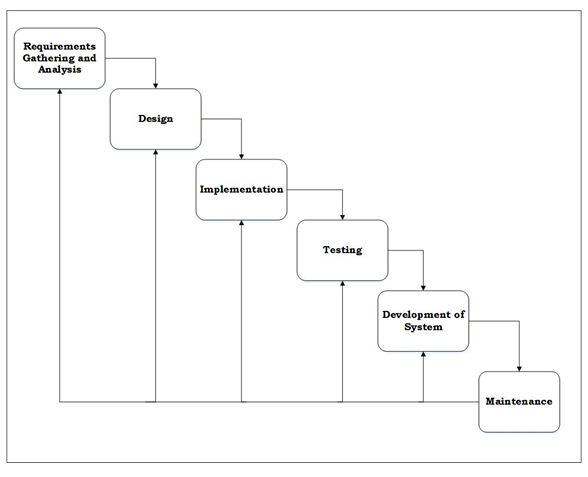
Modified Waterfall ModelThe researcher designed the proposed system that will fulfil the requirements of Company ABC. The proponents enhanced the details of the lay out.
Development Phase
In this phase, the proponents developed a design that will provide the need of the company and customers. The proponents also decided to create a dynamic mapping for lot description.
Testing Phase
In this phase, the researchers will test the input and output of the system to determine if the system gives the correct operation that is provided. The researchers invited various people from the company to test and rate the system.
Implementation Phase
In this phase of the study where the developed System and documents are already done and it will be implemented to Company ABC for observation if it is efficient and effective.
Maintenance Phase
The system requires maintenance every six months in order to keep the system’s functionality on track and to deliver efficient service for its customers.
User’s Acceptance Survey
The developed system will undergo user acceptance testing by the users of the system organization or the administration of the company that includes their customer, and the Company ABC.
Requirement Specifications
Operational Feasibility
Mainly, the goals of the system are to develop the following functionalities:
This system is a local area network that can be accessed by the authorized person only.
- This system provides a Google map for better and easier way of locating the lot location.
- This system provides an organized system which gives the project officer and collection officer to generate available Lots.
- This system has verification SMS notification for the customers if their number is available and to notify them with their payments.
- The lot reservation feature of the system will provide support in reserving block and lots.
- This system ensures the security and confidentiality of the customer’s records and the company’s report.
- This system provides a searching button, Add, Edit, Update, and delete reservations.
- This system provides ledger for the customers and monthly amortization.
- This system provides printing services of the reports and receipt for the customers.
- This system also saves confidential records of the customers in a database.
Program Environment
Front End
The front end is the interface between the user and the system. It is an input data where you can see the user. The proponents will use java as the main scripting language, while JDK 1.8.0, and Jasper Report and IReports for providing the user interface of the system as for design the proponents will use Photoshop.
Back End
In this study, the researchers will use XAMPP as the server scripting language which serves as connectivity of MYSQL Database including the sub- reports.
Technical Feasibility
Hardware (Minimum Requirement)
Company ABC Lot Reservation Management System with SMS Notification shall have a local server, which will be implemented in the company of Company ABC.
Server
- Intel Core i3 processor
- Memory
- RAM 4GD
- Hard Disk 1TB
- Video Card 2GD
- Gigabyte
- Motherboard
The system will require HSUPA USB Stick to send the SMS Notification. It will also require customers to have mobile phones.
Clients
The system requires the clients or the users to have a desktop computer, high- speed uplink packet access (HSUPA) to send SMS Notification, an internet to access Google Map.
The system also requires the customers to have a mobile phone to be verified and receive SMS Notification.
Software (Minimum Requirements)
Server
- XAMPP
- MySQL
System Architecture
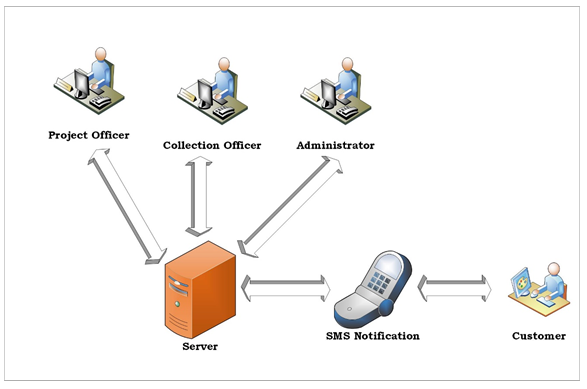
Figure 3.0 System Network Layout
This figure shows the network layout of the researched system. It displays the structural design of the system wherein the clients of Company ABC will encode the information into the database and the system will send the SMS Notification to the customers.
Gantt Chart
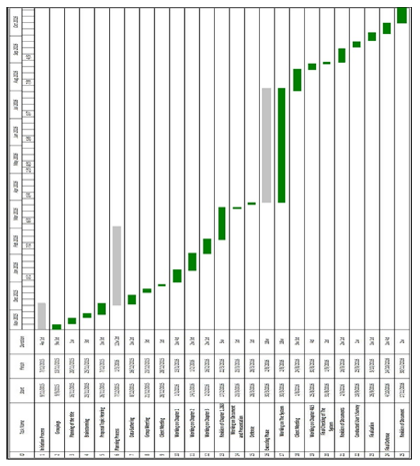
Figure 4.0 Gantt Chart
Figure 4 shows the Gantt Chart of the tasks that have been done by the proponents with the time allotted for the establishment of the entire system and fulfilment of the documentation.
Cost Benefit Analysis
This table shows the development cost of the researched system. The developmental cost includes the proponents’ salary and the expenditures in researching and creating the researched system.
Table 2.0 Developmental Cost
| Developmental Cost | Duration | Monthly Cost | Total Amount | ||
| Programmer | 8 months | Php 10,000.00 | Php 80,000.00 | ||
| System Analyst | 8 months | 15,000.00 | 120,000.00 | ||
| Researcher | 8 months | 7,800.00 | 62,400.00 | ||
| Project Manager | 8 months | 20,000.00 | 160,000.00 | ||
| Office Supplies | 8 months | 300.00 | 2,400.00 | ||
| Internet Connection (PLDT) | 8 months | 999.00 | 7,992.00 | ||
| Electricity | 8 months | 800.00 | 6,400.00 |
| Total | Php439,192.00 |
This table shows the developmental cost of the researched system. The developmental cost includes the proponents’ salary and the expenditures in researching and creating of the researched system.
Table 2.1 Operational Cost
| Operational Cost | Duration | Monthly Cost | Total Amount |
| Electricity | 12 months | Php 800.00 | Php 9,600.00 |
| Internet Connection (PLDT) | 12 months | 999.00 | 11,988.00 |
| Total | Php21,588.00 |
This table shows the operational cost of the researched system. The operational cost includes the expenditures in using the researched system.
Table 2.2 Total Developmental and Operational Cost
| Total Amount | |
| Total Developmental Cost | Php 439,192.00 |
| Total Operational Cost | 21,588.00 |
| Total | Php 460,780.00 |
This table shows the total cost of the development and operation of the researched system.
Table 2.3 Benefits of the System
| Benefits of the System (Annually) | Amount/Value |
| Efficiency of work/output of Employee | Php 120,800.00 |
| Security of Data | 8,000.00 |
| Work management of Employee | 38,832.00 |
| Total | Php 69,632.00 |
This table shows the computed benefits of the researched system to the school. The proponents have researched the presumed amounts or value of each item that will benefit the school over its traditional method per year.
Table 2.4 Cost Benefit Analysis
| Details | Year 0 | Year 1 | Year 2 | Year 3 | Year 4 | Year 5 |
| 0 | 1 | 2 | 3 | 4 | 5 | |
| Present Value Factor | 1.00 | 0.91 | 0.83 | 0.75 | 0.68 | 0.62 |
| System Cost | 439,192.00 | 21,588.00 | 23,746.80 | 26,121.48 | 28,733.63 | 31,606.64 |
| PV of System Cost | 439,192.00 | 19,645.08 | 19,709.84 | 19,591.11 | 19,538.87 | 19,596.33 |
| System Benefit | 0.00 | 69,632.00 | 76,595.20 | 84,254.72 | 92,680.19 | 101,948.21 |
| PV of System Benefit | 0.00 | 237,601.00 | 63,574.02 | 63,191.04 | 63,022.53 | 63,207.89 |
| NPV | -439,192.00 | 217,955.92 | 43,864.18 | 43,599.93 | 43,483.66 | 43,611.56 |
| Interest Rate | 10% | |||||
| Total PV of System Benefit |
| Total PV of System Cost | 537,273.23 | |||||
| Total NPV | -46,676.75 |
YEARS MONTHS DAYS
Payback Period 3.02 1 6 2
Return on Investment -9%
This table shows the cost benefit analysis of the system. Each figure has a corresponding data as shown in the table. The payback period came out as 3.02 with an ROI of -9%.
Data Flow Diagram
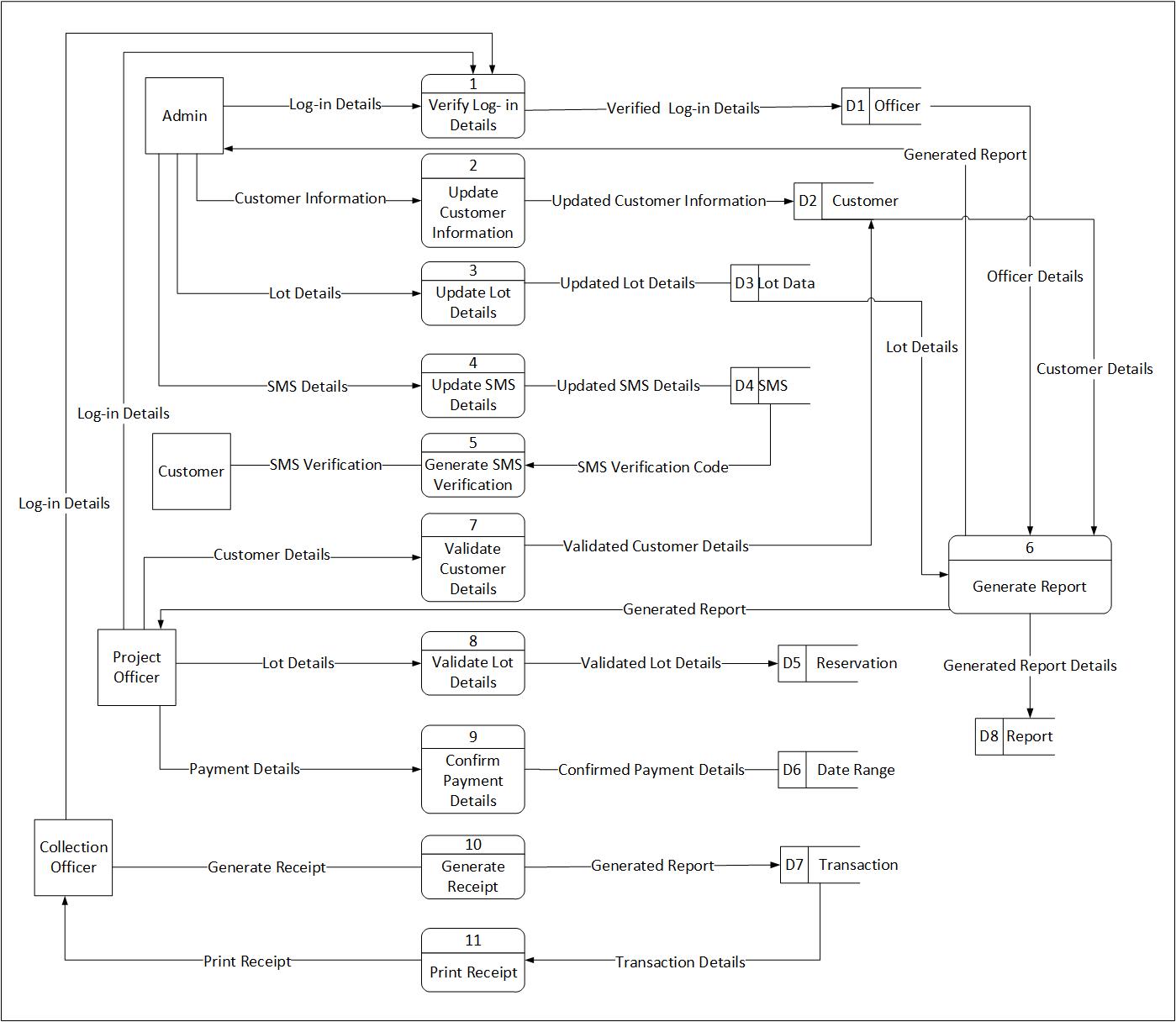
Figure 6.0 Data Flow Diagram (Yourdon & De Marco)
This figure shows the data flow of the researched system. It shows how it is related to each other.
Database Model
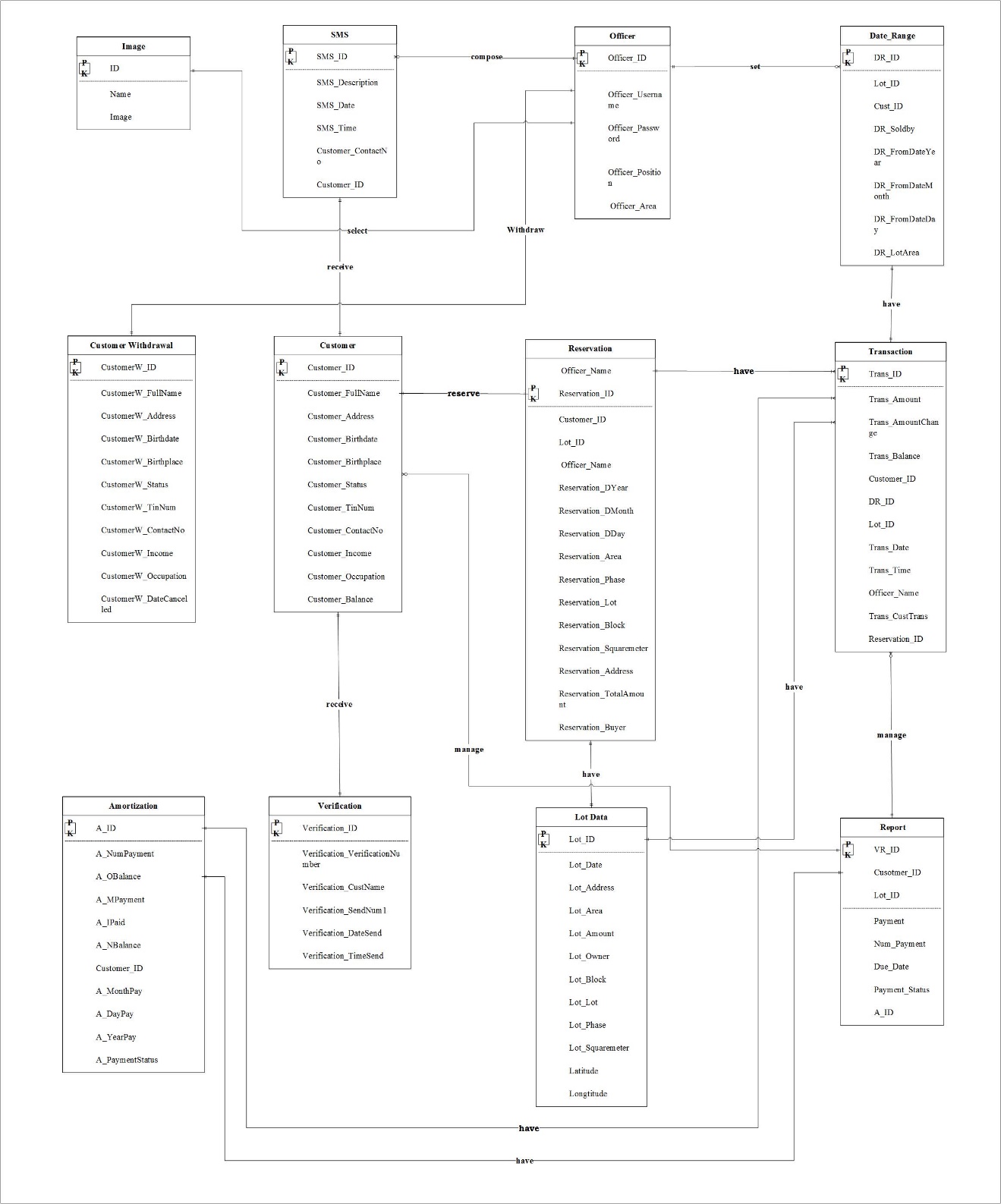
Figure 5.0 Entity Relationship Diagram
This figure shows the entities of the researched system and how it would be related or connected with the other entities. As shown in the figure, the researchers had described what tables would be created and what information would be stored.
Data Dictionary
Table 3.0 Data Dictionary of the System
| Data Field | Type | Description |
| Officer Data Dictionary | ||
| Officer_ID | int(11) | Officer ID |
| Officer_Username | varchar (55) | Officer Username |
| Officer_Password | varchar(55) | Officer Username |
| Officer_Position | varchar(55) | Officer Position |
| Officer_Area | varchar(77) | Area Assign for Officer |
| Officer_Name | varchar(55) | Officer Name |
Table 3.1 Lot Data Dictionary of the System
| Data Field | Type | Description |
| Lot Data Dictionary | ||
| Lot_ID | int(11) | Lot ID |
| Lot_Date | date (55) | Date of Reservation |
| Lot_Address | varchar(55) | Location of Lot |
| Lot_Area | varchar(55) | Area of Lot |
| Lot_Amount | medInt(11) | Amount of Lot | ||
| Lot_Owner | varchar(11) | Owner of Lot | ||
| Lot_Block | int(11) | Block of Lot | ||
| Lot_Lot | int(11) | Space Lot | ||
| Lot_Phase | int(11) | Lot | ||
| Lot_SquaremeterLatitude
Longtitude |
int (11)Float(10,5)
Float(10,5) |
Square meter of LotCoordinates of Lot X axis
Coordinates of Lot Y axis |
||
Table 3.2 Customer Withdrawal Data Dictionary of the System
| Data Field | Type | Description |
| Customer Data Dictionary | ||
| CustomerW_ID | int(11) | Customer ID |
| CustomerW_FName | varchar(55) | Customer Full Name |
| CustomerW_Address | varchar(55) | Customer Address |
| CustomerW_Birthdate | date(55) | Customer Birthdate |
| CustomerW_Birthplace | varchar(55) | Customer Birthplace |
| CustomerW_Status | varchar(55) | Customer Status |
| CustomerW_TinNo. | bigInt(20) | Customer Tin Number |
| CustomerW_ContactNo. | bigInt(11) | Customer Contact Number |
| CustomerW_Income | int(11) | Customer Income |
| CustomerW_Occupation | varchar(55) | Customer Occupation |
| CustomerW_DateCancelled | varchar(55) | Customer Withdrawal |
Table 3.3 Customer Data Dictionary of the System
| Data Field | Type | Description |
| Customer Data Dictionary | ||
| Customer_ID | int(11) | Customer ID |
| Customer_FName | varchar(55) | Customer Full Name |
| Customer_Address | varchar(55) | Customer Address |
| Customer_Birthdate | date (55) | Customer Birthdate |
| Customer_Birthplace | varchar(55) | Customer Birthplace |
| Customer_Status | varchar(55) | Customer Status |
| Customer_TinNo. | bigInt(20) | Customer Tin Number |
| Customer_ContactNo. | bigInt(11) | Customer Contact Number |
| Customer_Income | int(11) | Customer Income |
| Customer_Occupation | varchar(55) | Customer Occupation |
| Customer_Balance | int(11) | Customer Balance |
Table 3.4 Reservation Data Dictionary of the System
| Data Field | Type | Description |
| Reservation Data Dictionary | ||
| Reservation_ID | int(11) | Reservation ID |
| Customer_ID | int (11) | Customer ID |
| Lot_ID | int (11) | Lot ID |
| Officer_Name | varchar(55) | Officer Name |
| Reservation_DYear | int(11) | Date of Year Reservation |
| Reservation_DMonth | int(11) | Day of month Reservation |
| Reservation_DDay | int(11) | Day of Reservation |
| Reservation_Area | varchar(55) | Lot Area |
| Reservation_Phase | int(11) | Lot Phase |
| Reservation_Lot | int (11) | Lot of Location |
| Reservation_Block | int (11) | Block of Location |
| Reservation_Squaremeter | int (11) | Lot Square meter |
| Reservation_Address | varchar(55) | Customer Address |
| Reservation_TotalAmount | int (11) | Customer Amount |
| Reservation_Buyer | varchar(55) | Customer Buyer |
Table 3.5 SMS Data Dictionary of the System
| Data Field | Type | Description | |
| SMS Data Dictionary | |||
| SMS_ID | int(11) | SMS ID | |
| SMS_Description | varchar(180) | SMS Reminders to the Customer | |
| SMS_Date | varchar(55) | Date that send a message | |
| SMS_Time | varchar(55) | Time that send a message | |
| Customer_ContactNo | bigInt(11) | Customer Number | |
| Customer_ID | int(11) | Customer ID | |
Table 3.6 Verification Data Dictionary of the System
| Data Field | Type | Description |
| Data Field | Type | Description |
| Verification Data Dictionary | ||
| Veri_ID | int(11) | Verification ID |
| Veri_VerificationNumber | varchar(11) | Verification Code |
| Veri_CustName | varchar(55) | Customer Name |
| Veri_SendNum1 | bigInt(20) | Customer Number |
| Veri_DateSend | varchar(55) | Date Send by Officer |
| Veri_TimeSend | varchar(55) | Time Send by Officer |
Table 3.7 Date Range Data Dictionary of the System
| Data Field | Type | Description |
| Date Range Data Dictionary | ||
| DR_ID | int(11) | Duration ID |
| Lot_ID | int(11) | Lot ID |
| Cust_ID | int(55) | Customer ID |
| DR_SoldBy | varchar(55) | Customer Name |
| DR_FromDateYear | varchar(55) | Date of Reservation |
| DR_FromDateMonth | varchar(55) | Month of Reservation |
| DR_FromDateDay | varchar(55) | Day of Reservation |
| DR_LotArea | varchar(55) | Lot Area |
Table 3.8 Image Data Dictionary of the System
| Data Field | Type | Description | |
| Image Data Dictionary | |||
| ID | int(11) | Image ID | |
| Name | varchar (77) | Image Name | |
| Image | longblob | Image | |
Table 3.9 Amortization Data Dictionary of the System
| Data Field | Type | Description |
| Amortization Data Dictionary | ||
| A_ID | int(11) | Amortization_ID |
| A_NumPayment | int(11) | Number Payment |
| A_OBalance | Double | Old Balance |
| A_MPayment | Double | Monthly Payment |
| A_IPaid | Double | Interest Paid |
| A_PPaid | Double | Principal Paid |
| A_NBalance | Double | New Balance |
| Customer_ID | Int(11) | Customer_ID |
| A_MonthPay | Int(55) | Monthly Payment |
| A_DayPay | Int(11) | Current Date |
| A_YearPay | Int(11) | Yearly Payment |
| A_PaymentStatus | Varchar(55) | Payment Status |
Table 3.10 Report Data Dictionary of the System
| Data Field | Type | Description |
| Report Data Dictionary | ||
| VR_ID | int(11) | Verification ID |
| Customer_ID | int(11) | Customer ID |
| Lot_ID | Varchar(111) | Lot ID |
| Payment | Int(55) | Customer Payment |
| Num_Payment | Int(11) | Number of Payment |
| Due_Date | Int(11) | Due Date |
| Payment_Status | Int(11) | Payment Status |
| A_ID | Int(11) | Amortization ID |
Presentation, Analysis and Interpretation of Data
This chapter presents and interprets the result of the program proposed to Company ABC Lot Reservation Management System with SMS Notification which will be executed by the Project Officer, Collection Officer, and Admin.
Presentation
The proponents selected the respondents randomly and demonstrated the system in each of them. The proponents perceived the respondents of their interest in technology and their understanding of the system. After which, the proponents evaluated them using the User Acceptability Questionnaire provided by the Information Communication Technology (ICT) professors and gathered the data in order to work on the statistical formulas.
Data Analysis
This section presents the analysis of the data collected from the respondents from the Company ABC and the Department of Teachers.
Characteristics of the Respondent
The study population was composed of the Company ABC: Project Officer, Collection Officer, Admin and the Department of Teachers.
Table 4.0 Frequency of Respondents
Respondents Frequency
Project Officer 1
Collection Officer 1
Amin 1
Teachers 2
Customers 25
Total 30
This table shows the frequency of respondents who have answered the User – Acceptability Survey. The proponents got a total of 5 respondents.
Table 5.0 Reliability Test Result
| Cronbach’s Alpha | |
| Acceptable | 0.700 |
| Data Gathered | 0.986 |
This table shows the result of reliability testing undergone by the data gathered from the User-Acceptance Survey. A Cronbach’s Alpha of 0.986 shows that the data gathered is reliable.
Interpretation of Data
The instrument required to access the perception of the users in terms of five (5) categories namely: Effectiveness, Efficiency, Quality, Timeliness and Productivity. The first category was composed of four (4) items, the second category was composed of three (3) items, and third, fourth were composed of four (4) items and the last categories was composed of three (3) items. The rating scale was 1 to 5: 1 as very dissatisfied; 2 as dissatisfied; 3 as neutral; 4 as satisfied; and 5 as very satisfied.
Table 6.0 Rating Scale
| Range of Mean | Verbal Interpretation |
| 4.21 – 5.00 | Very Satisfied |
| 3.41 – 4.20 | Satisfied |
| 2.61 – 3.40 | Neutral |
| 1.81 – 2.60 | Dissatisfied |
| 1.00 – 1.80 | Very Dissatisfied |
This table shows the range of mean and its verbal interpretation.
Table 7.0 Survey Result for Effectiveness
Effectiveness
| Question 1 | Question 2 | Question 3 | Question 4 | TOTAL | |
| Mean | 5 | 4 | 5 | 5 | 4.53 |
The table above shows that the user’s survey result for the effectiveness of the system has a total mean of 4.53 which interprets that the users were Very Satisfied with the system’s effectiveness. The subcategories of which like Completeness and Accuracy of the System, the ability to provide correct and complete document, (5) interpreted as Very Satisfied; Report Generation, the ability to provide correct and complete document required by the user with minimum idle time, (4) interpreted as Satisfied; Search, Retrieval and Dissemination of Required Information, the ability to access, create and disseminate required information, (5) interpreted as Very Satisfied; and Report Generation Flexibility, the ability to provide printable reports in a format required by the user, (5) interpreted as Very Satisfied.
Table 7.1 Survey Result for Efficiency
Efficiency
| Question 1 | Question 2 | Question 3 | TOTAL | |
| Mean | 5 | 5 | 4 | 4.52 |
The table above shows that the user’s survey result for the system’s efficiency has a total mean of 4.52 which interprets that the users were very satisfied with the efficiency of the system. The subcategories of which like Ease of Use, the ability of the user to easily perform required tasks, (5) interpreted as Very Satisfied; Complexity of the Task, the learnability to perform tasks, (5) interpreted as Very Satisfied; and Task Accuracy, the ability to perform tasks without errors, (4) interpreted as Satisfied.
Table 7.2 Survey Result for Quality
Quality
| Question 1 | Question 2 | Question 3 | Question 4 | TOTAL | |
| Mean | 5 | 5 | 5 | 4 | 4.6 |
The table above shows that the user’s survey result for the system’s quality has a total mean of 4.6 which interprets that the users were satisfied with the system’s quality. The subcategories of which like Report Content, the ability to produce accurate documents to users, (5)
interpreted as Very Satisfied; Report Flexibility, the ability to produce documents in a format useful to users, (5) interpreted as Very Satisfied; Report Turnaround Time, the ability to produce reports in time to users, 5 interpreted as Very Satisfied; and Report Consistency, the ability to produce documents that are consistent with other reports, (4) interpreted as Satisfied.
Table 7.3 Survey Result for Timeliness
Timeliness
| Question 1 | Question 2 | Question 3 | Question 4 | TOTAL | |
| Mean | 4 | 4 | 4 | 5 | 4.41 |
The table above shows that the user’s survey result for the system’s timeliness has a total mean of 4.41 which interprets that the users were very satisfied with the system’s timeliness. The subcategories of which like System Accessibility, the system is accessible to users whenever they need it, (4) interpreted as Satisfied; System Adaptability, the system can easily adapt to new demands, (4) interpreted as Satisfied; Data Security, the system allows access to authorized personnel, (4) interpreted as Satisfied; and Achievement of Goals, the system provides the necessary functionality to achieve its purpose in line with the organizational goals, (5) interpreted as Very Satisfied.
Table 7.4 Survey Result for Productivity
Productivity
| Question 1 | Question 2 | Question 3 | Question4 4 | TOTAL | |
| Mean | 5 | 4.6 | 4.67 | 4.61 | 4.767 |
The table above shows that the user’s survey result for the system’s productivity has a total mean of 4.767 which interprets that the users were Very Satisfied with the system’s productivity. The subcategories of which like User Assistance, provides the user with procedural documentation to minimize operational errors, (5) interpreted as Very Satisfied; Throughput, the ability to provide required documents in the shortest time possible, (4.6) interpreted as Satisfied; Decision Support, the ability to provide the required information needed for decision making, (4.63) interpreted as Very Satisfied; and Overall, (4.61) interpreted as Very Satisfied.
Summary of Findings, Conclusion and Recommendation
This chapter introduces the presentation of the summary of the study, the conclusion and recommendations formulated upon the result of the implementation of the Company ABC for Lot Reservation with SMS Notification.
Summary of Findings
This study was conducted for the purpose of making an easier, faster and more efficient Company ABC Lot Reservation management system with SMS Notification. After analyzing the data gathered and after the proponents have interviewed the organization, they found out that several problems arise during Lot Reservation process of the cooperative. Slow processing of reservation and difficulty in file management as well as having a hard time in computing member’s monthly amortization as the main problem of the said cooperative.
Recommendations
Based on the information gathered, it is safe to recommend to the officer that the system is efficient and much dependable to use in the payment transaction. The system was able to perform the necessary features that are stated in the related system and in the scope and objectives.
Conclusion
The result of the study made by the researchers concludes that Company ABC has the need of having Lot Reservation Management System with SMS Notification in order to overcome the mentioned problems of the organization such as difficulty in file management, hard time in computing monthly amortization and generating financial statement or reports regularly in order to lessen the burden of the organization.

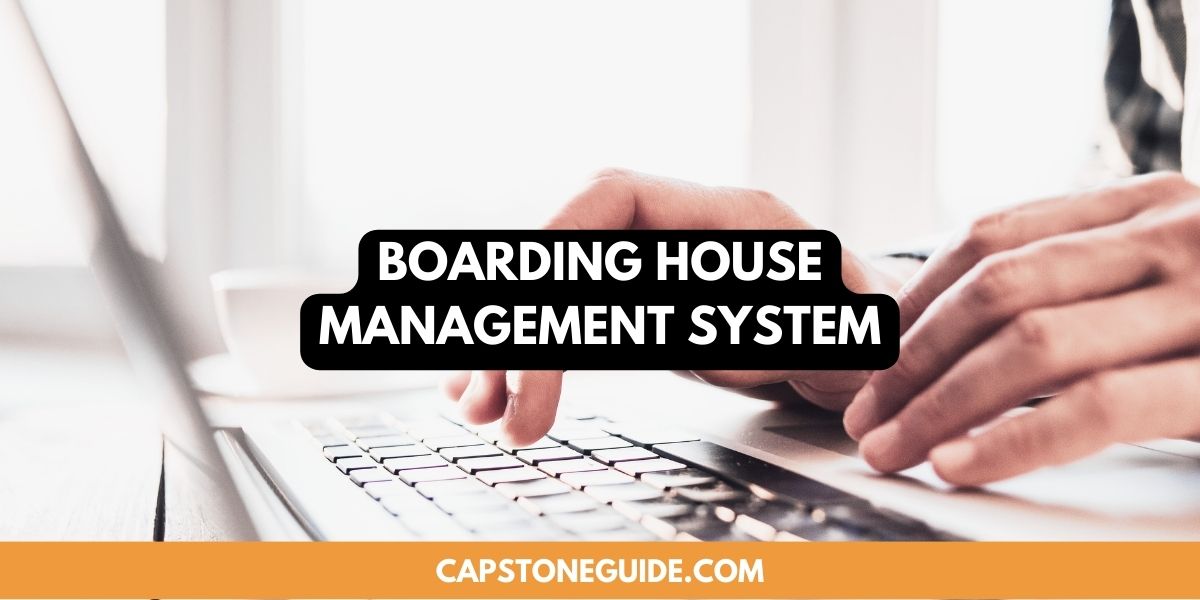


Leave A Comment
You must be logged in to post a comment.